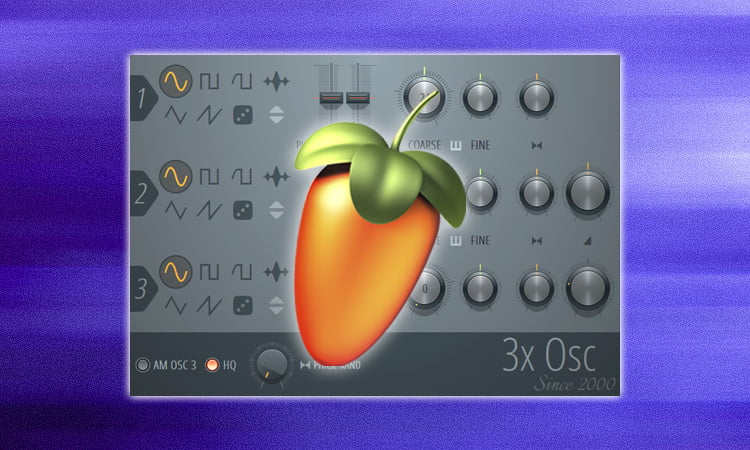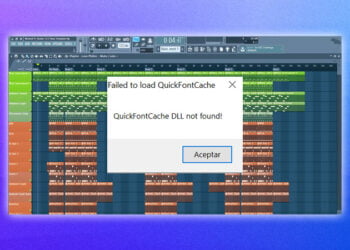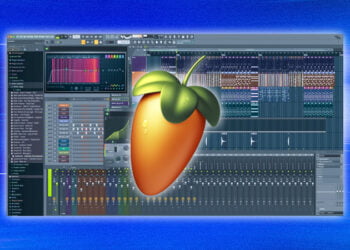For many electronic music producers, achieving a deep and heavy bass sound is essential to their projects.
FL Studio is a powerful digital audio workstation and one of the most popular tools for creating electronic music.
It can be intimidating for new users, however, so in this blog post we will provide a step-by-step guide on how to make a heavy bass in FL Studio.
We will cover the basics of the software, such as how to create a track, apply effects, and use automation, as well as provide some tips and tricks to help you get the most out of FL Studio and make your tracks sound professional.
By following our guide, you’ll be able to create a deep and powerful bass sound in no time.
Select a waveform for the oscillator
The first step to making a heavy bass in FL Studio is to select a waveform for the oscillator.
There are several options available in the oscillator section, including sine, saw, triangle, pulse, and noise.
Depending on the type of sound you want to create, you can experiment with different waveforms to find the one that works best for you.
For heavy bass sounds, saw, triangle, and pulse are the most commonly used oscillator waveforms.
To get started, select one of these oscillator waveforms and begin adjusting its parameters.
Adjust the amplitude of the oscillator
Next, you’ll want to adjust the amplitude, or volume, of the oscillator.
To do this, open up the Mixer and select the oscillator you want to adjust.
On the right side of the Mixer, you’ll see a knob titled “Amp.” This is the amplitude.
Adjust this based on the volume you want your oscillator to have.
If you’re looking to make a heavy bass, you’ll want to turn it up quite a bit. You can tweak it as you go to get the perfect mix.
Add a lowpass filter
After you have added your bass sound to your project, the next step is to add a lowpass filter.
This will help you shape the sound and give it a heavy, bottom-end sound.
To add the filter, click on the “Filters” button on the left side of the screen and then drag the Lowpass filter onto the sound.
You can then adjust the cutoff frequency and resonance to create the perfect bass sound.
Additionally, adding a slight amount of distortion to the sound can give it an even heavier bass.
Adjust the Cutoff and Resonance
The fourth step in making a heavy bass in FL Studio is to adjust the cutoff and resonance.
The cutoff is the frequency at which the bass line starts to roll off.
You can adjust this to determine how much bass you want in the track.
The resonance controls the amount of emphasis added to the cutoff frequency.
Increasing the resonance will increase the amount of bass you hear.
You can experiment with different combinations of cutoff and resonance to find the perfect sound for your track.
Add EQ and compression
One of the secrets to making a heavy bass in FL Studio is to use EQ and compression.
EQ stands for equalization and allows you to adjust the frequency of your sound.
Compression, on the other hand, allows you to control the dynamics of the sound by decreasing the difference between the loudest and quietest parts.
To use EQ and compression, first select the bass track in your project and then open the EQ and compressor plugins.
Use the EQ to fine tune the sound, cutting out the frequencies you don’t want and boosting the ones you do.
Use the compressor to tighten up the sound, making it more consistent and powerful.
Use distortion to add weight
Once you’ve got your bass sound ready, it’s time to make it heavy.
One of the best ways to do this is to use distortion.
Distortion is a great tool for adding weight to a sound, particularly when you are making bass music.
It’s easy to add distortion to your sound in FL Studio.
Start by adding a distortion plugin to the track.
Then, mess around with the distortion parameters until you get the desired effect.
You can adjust the amount of gain, tone, and frequency to really bring out the weight of the bass.
Experimenting with different distortion settings can help you create the exact sound you are looking for.
Layer multiple sounds for a bigger sound
One of the best ways to make a heavy bass sound in FL Studio is to layer multiple sounds.
It’s easy to do and it’s a great way to get a big, thick sound.
You can layer different sounds of the same type (for example, layering two 808 bass sounds) or mix different types of sounds together (like a 808 bass and a synth bass).
Experimenting with different combinations of sounds is the key to getting a great sound.
Try layering low-end and high-end sounds, as well as different types of sounds.
Once you’ve found a combination you like, you can tweak the sounds individually or use effects to further shape the sound.
Experiment with automation and modulations
Next, consider experimenting with automation and modulations.
Automation involves setting parameters of your synth or sound to vary over time.
This can help to make your bass sound more dynamic and interesting.
Modulations involve changing the sound of a synthesizer or effect over time, either through a step sequencer or an LFO.
This can add a unique texture and movement to the bass, and will help keep it from becoming monotonous.
As always, it’s best to experiment and play around with these features to get the sound you’re looking for.
Conclusion
In conclusion, creating a heavy bass in FL Studio is a relatively simple process with the right knowledge and tools.
With a few clicks of the mouse, you can quickly get the bass you are looking for.
With this guide, you now have a better understanding of how to make heavy bass in FL Studio, as well as the tools needed to create the perfect bass tone.
So get ready to start making music and create the bass of your dreams!
























